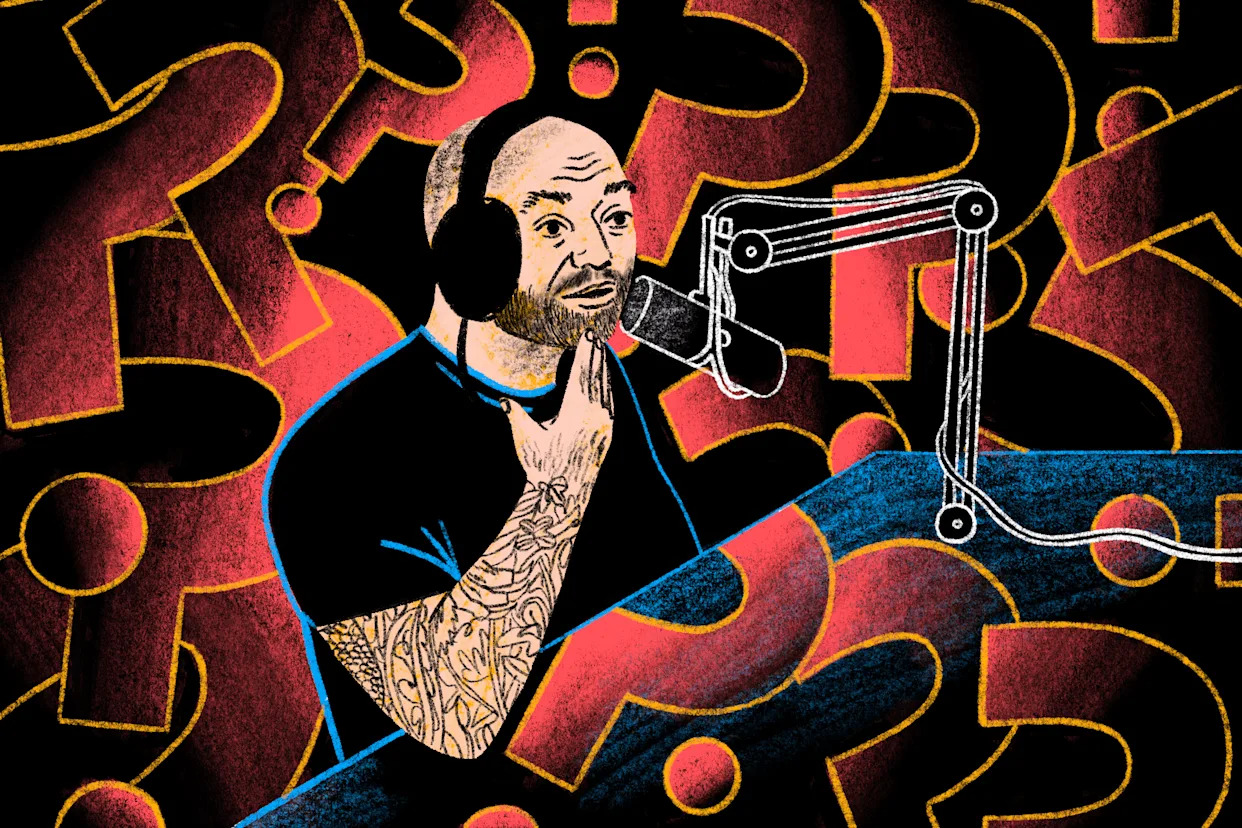Shoshana Walter has reported on addiction and the impact of drug laws for almost 10 years. The reporting for this piece began at Reveal and is excerpted from her new book, Rehab, published by Simon & Schuster.
On a sweltering August morning in 2015, Chris Koon walked out of the Grant Parish jail. Granny and Mom were waiting for him. There was little time to embrace. It was a two-and-a-half-hour drive to the drug treatment facility, Cenikor, and he had just a few hours to pack and make it there, or else the judge could revoke his bond and send him back to jail.
Granny took him home and Chris pulled on fresh clothes. He threw some T-shirts, jeans, and flip-flops into a suitcase. Along the way, they stopped at Burger King. Chris couldn’t wait for his first bite of non-jail food. The closer they got, though, the more anxious Chris felt. He knew Cenikor had to be better than jail, but what would that feel like? He knew in theory, but mentally, how quickly would this all pass? What would he miss? Would he be able to see his family? His friends? In jail, he’d gotten used to the monotony, the fights, the smells, the noise. Chris knew people there; he’d gone to the same high school as some of them. At Cenikor, he wouldn’t know a soul. And what if this didn’t work out, and he ended up going to prison anyway? Carrie, too, felt anxious. “Life is about hardship,” Carrie later said. “You gotta learn to endure.” If things got tough, would Chris bolt? She didn’t want that kind of mistake to derail his entire life.
Chris swung his suitcase out of the car and walked up to the glass double doors. A woman buzzed them in and greeted them with a wide, unblinking smile. On the wall was a poster—“Rules of Cenikor”—with a big block of text underneath that Chris didn’t have time to read. The woman ushered Chris and his mom and granny down the hallway to the intake coordinator, who would process Chris into the program.
The coordinator had been a participant himself not too long ago. Now, he was charged with guiding clients through the paperwork, visiting jails and courts, and selling the program. He was muscular, with a jowly square jaw and hair sculpted into a pompadour. Chris thought he looked sort of like a boxer dog who’d joined a boy band.
Granny and his mom stayed there with Chris while Chris learned about the program and filled out paperwork. Cenikor had been around for more than 40 years, the coordinator explained, and had one of the highest success rates in the country. The program provided weekly one-on-one counseling sessions with licensed counselors and group therapy three times per week. They’d find Chris a job and he’d be able to save money in the program. Some graduates had enough saved up to buy flat-screen televisions or new cars. It sounded really good to Carrie. She liked that the program would help Chris get established in a job and that he could save money for when he left.
Cenikor had multiple facilities in Texas and Louisiana, including detox and outpatient programs. Its facilities were licensed by regulators in both states. They had accreditation from the Commission on Accreditation of Rehabilitation Facilities, the nonprofit body that provides voluntary certification for rehab facilities. Cenikor’s website touted its program as “one of the oldest and most successful substance abuse treatment centers in the nation.”
The coordinator told Chris he had spent years in prison in Texas. He explained that Cenikor was going to be a hell of a ride. He knew all the games people play, and he wasn’t going to let Chris just sit on his butt. He was proof positive the program worked. “We don’t do time here,” Chris recalled the coordinator had said. “We work on ourselves. And I’ma make sure you work on yourself.” Chris wanted to get better, he really did. He wanted to be the person his mom and Granny imagined he could be. He signed the documents and said his goodbyes, then he returned to the coordinator, who began walking Chris to his room.
That’s when Chris saw something he had never seen before: a man sitting in a chair, his back straight, his knees bent at a precise 90-degree angle, his elbows locked; he was looking straight ahead, unblinking and silent. They were in a big, open room that looked like a cafeteria. As they walked past him, Chris tried to make eye contact to say hello, but the man stared right through him. Then Chris spotted another man across the hall, sitting the exact same way.
What is this? Chris thought.
Chris moved into his room, which he would be sharing with a roommate. He unpacked his clothes, hanging them to face the right side of his closet, in a certain order, per Cenikor rules. Jackets, sweaters, long-sleeve shirts, short-sleeve shirts, pants, shorts. He placed his shoes in a row at the foot of the bed, from his work boots to his “flippity flops,” as he called them. He “ranger-rolled” his underwear in the dresser and made his bed. Chris learned that another resident would come around daily to inspect his room and make sure he was adhering to Cenikor standards.
The building was sprawling, about 155,000 square feet, but Cenikor occupied only a sliver of it. When it was acquired in 2001, they found the facility dilapidated and requiring tremendous cost to repair. Participants complained of holes in the wall, malfunctioning heaters and air conditioners, rats, cockroaches, and black mold. The front desk, typically manned by a resident, was situated just inside the front door. Past the front desk was the ’Kor room—the cafeteria where residents ate their meals and took part in group meetings.
Past the ’Kor room was the women’s wing, and upstairs were the rooms for men. Residents were not allowed to be alone with a member of the opposite sex. The number of people at Cenikor was in constant flux, but during Chris’ stay there were about 150 residents.
For the first month, he sat in a classroom and learned all the Cenikor rules. There were about 30 people in his class, most court-ordered, like him. The rules ranged from the mundane—Chris was required to shave everyday—to the minuscule. He could get in trouble for not having a pen, not wearing a belt, for an untied shoelace, for leaving a book on the table, for his shirt coming untucked. Chris was 6-foot-3 with a belly, so his shirt was constantly coming untucked. He quickly learned the consequences.
“Go have a seat in the verbal chair. Think about having your shirt untucked,” he’d be told. To which Chris was required to reply, “Thank you.” Anyone could send him to that chair, at any time. Anyone could scream at him while he was sitting in that chair, and he couldn’t do anything about it. He had to sit there with his arms locked, his knees at a precise 90-degree angle, staring at the wall, not speaking, not making eye contact. Chris quickly became like one of those men he had seen when he first arrived at the facility.
There were other punishments, too. There was “mirror therapy,” in which he stared at himself in a mirror and continuously shouted out what he’d done wrong. Or, there was “the dishpan,” when he’d have to wear a neon green shirt and wash the dishes and scrub the baseboards, all while reciting the Cenikor philosophy—a paragraph-long diatribe about self-change. Or, there was the “verbal haircut,” in which another participant screamed at him even for just a minor rule infraction.
Participants were required to document infractions on slips of paper called “pull-ups”—at least 10 per week. To succeed at Cenikor, and to get enough points to graduate, Chris would have to tattle on everybody else. Anytime someone got pissed off, the participants and staff would gather in a circle and select one or two people to sit in the middle. Then they took turns confronting that person, professing their faults and errors, while the person was permitted only to say “thank you.” Cenikor staff called this “The Game.” Chris heard women called bitches and sluts. He saw grown men cry. Even some of the employees participated in this exercise. Many of them were former participants.

Hundreds of such programs across the country operated similarly, some with tactics even more bizarre. At a program in North Carolina, residents were forced to endure days without sleep as they sat for marathon group confessionals, deliriously relaying their life stories, their deepest secrets and sins. Behavior modification programs for troubled teens employed similar practices, with one congressional investigation comparing their methods to “the highly refined brainwashing techniques employed by the North Koreans.” Many of these programs spawned from Synanon, a recovery community founded in Santa Monica in 1958, where residents would live and work and hold one another accountable for slip-ups and relapses. The model became the precursor to rehab in the United States, while Synanon itself would ultimately morph into something more sinister—a multimillion-dollar operation with a cult-like leader and a mercenary army.
Synanon had also pioneered another tactic for Cenikor to follow: It funded operations in part by putting residents to work.
Every night, at each Cenikor facility, a resident posted a line-out sheet on the wall of the ’Kor room, notifying residents where they would be dispatched the following day for work. The rehab patients were like temp workers, except they weren’t paid. And with jail or prison time hanging over their heads, Cenikor residents had little say about where, when, and how they worked.
Some worked at a mulch factory, others at an industrial laundromat, still others at a bakery or seafood store. They had also worked at Exxon and Shell oil refineries, in a Walmart warehouse, and in the cafeterias of Louisiana State University. They built scaffolding hundreds of feet high, sandblasted and painted tanks, performed electrical repairs, and lay rebar in cement in sweltering heat.
Chris was told his work funded the cost of his stay. But internal documents showed that the residents regularly made more than twice as much money as the facility’s daily operating expenses. Between 2013 and 2018, Cenikor made more than $42 million from their uncompensated Cenikor workers. Meanwhile, the facility had lucrative contracts with the state and federal governments, received insurance and Medicaid payouts, and had residents apply for and relinquish their food stamps. In short, the residents were not just working to cover costs. They were working to make profits for Cenikor. And they were working to an extreme. Though the program offered counseling, Chris rarely received it. Years after Chris’ time, Cenikor would shutter its Baton Rouge facility and work program. But hundreds of programs like it remained.
For the first month, Chris lived in a state of shock. He thought constantly about leaving Cenikor. Jail, with its mush melons in the rec yard and Maury Povich on repeat, would be easier than this, he thought. His every move felt picked apart. He could get into trouble at any time. As he rounded out the 30 days of orientation, his new sobriety gave way to a well of emotions the drugs had helped him suppress. He had no drugs in his system, nothing to distract from how horrible he felt: that he was a fuck-up, that he didn’t belong anywhere. And now it was the hell of being at Cenikor. He’d never felt so low. This is like a cult, he thought. It turned out that wasn’t far from the truth.
Excerpted from Rehab: An American Scandal by Shoshana Walter. Copyright © 2025 by Shoshana Walter. Reprinted by permission of Simon & Schuster, Inc.








Comments